Shinjuku Station
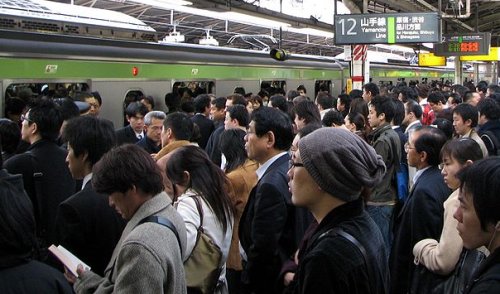
Morning commuters hoping to board a train that’s already full.
Photo courtesy of Chris_73 and used under the CC BY-SA 3.0 licence.
Shinjuku Station should be regarded as one of the wonders of the modern world. It is here that more than anywhere else Japanese efficiency is on display, alongside the sheer scale of all things Tokyo. Many residents of London believe that the Tube is the largest Metro in the world – but just this one station is used by more than 3.8 million passengers each day (more than the whole of the London Underground put together)! Shinjuku thus forms the city’s main transportation centre, it has the biggest sky-scraper district and nightlife hub, and is increasingly seen as the heart of modern Tokyo. (Though traditionalists still regard Ginza and the Marunouchi district between Tokyo station and the Imperial Palace as the official downtown.) The station is really a collection of separate stations run by seven different companies, all connected together by a myriad of passageways and tunnels. From early morning till late at night incessant streams of people of all ages and types hurry along who knows where. Most foreigners find the place a bit scary – but unaccompanied Japanese six year olds can be seen passing through on their way to school, completely unfazed by the tumult around them.
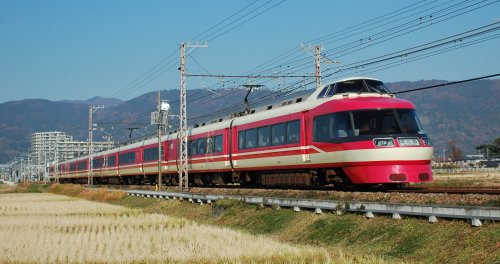
On Odakyu Railway’s ‘Romance Car’ trains from Shinjuku Station, passengers can see right out the front of the train, while the driver lies down above them
There is something majestic about the clockwork regularity with which giant 16 carriage commuter trains pass through day and night without fail, each packed full to the brim.
Several trains come and go every minute, many heading far away, beyond Tokyo proper, into the neighbouring prefectures that make up the other parts of greater Tokyo.
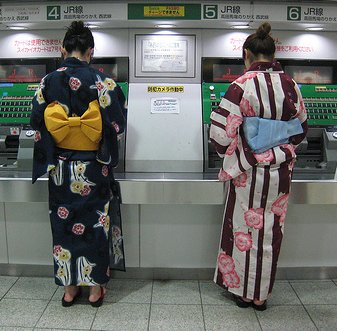
In the summer, young Tokyoites can often be seen wearing Yukata (informal Kimono), like these women buying tickets in Shinjuku Station
Some will drop their passengers in sleepy little villages in the mountains, or small towns beside the sea – places that couldn’t be more different to the great hub of humanity at the other end of the line. And to people in the UK who bemoan the demise of British Rail – Shinjuku Station is proof that private railways can work with heavenly reliability and immaculate safety records – and still turn a profit. There are 102 train lines in Tokyo, run by 30 different companies, and almost all operate completely without subsidy. About the only thing Shinjuku station doesn’t have is Bullet Trains – though plans are underway for a Maglev line to connect it to Osaka in just 55 minutes – an hour and a half faster than the existing Bullet Train from Tokyo station.
Update: Plans for the Maglev Shinkansen have changed, so that it’s terminus will now be at Shinagawa Station rather than Shinjuku. Also, due to the recent downturn in the Japanese economy, the opening date for the section to Nagoya is now 2027, and the line won’t reach all the way to Osaka until 2045.
Access: There are direct trains from hundreds of stations. It’s on the Yamanote and Chuo lines among many others.
Web: http://www.jreast.co.jp/e/stations/e866.html
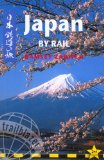 Japan by Rail
by Ramsey Zarifeh.
Japan has a magnificent nationwide rail network, so it makes sense to get the most out of it when you travel. This book organises attractions and destinations in terms of rail routes, noting possible stopping off points at intermediate stations - so you can see more in less time. It also contains all the information you’d expect from a regular guidebook - accommodation, what to see, opening times etc.
Japan by Rail
by Ramsey Zarifeh.
Japan has a magnificent nationwide rail network, so it makes sense to get the most out of it when you travel. This book organises attractions and destinations in terms of rail routes, noting possible stopping off points at intermediate stations - so you can see more in less time. It also contains all the information you’d expect from a regular guidebook - accommodation, what to see, opening times etc.
 Shinkansen: From Bullet Train to Symbol of Modern Japan
by Christopher P. Hood.
OK - so it’s expensive - but this really is the book about Shinkansen. And once you’ve read it you’ll understand that Shinkansen are much more than just trains - they’ve become integral to Japanese identity.
Shinkansen: From Bullet Train to Symbol of Modern Japan
by Christopher P. Hood.
OK - so it’s expensive - but this really is the book about Shinkansen. And once you’ve read it you’ll understand that Shinkansen are much more than just trains - they’ve become integral to Japanese identity.
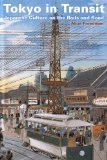 Tokyo in Transit: Japanese Culture on the Rails and Road
by Alisa Freedman.
This one has only recently been published, and I haven’t yet got hold of a copy, but the reviews are good. It’s much more about how Tokyo’s transport systems have affected the lives of the people who’ve used them, rather than being about transit itself.
Tokyo in Transit: Japanese Culture on the Rails and Road
by Alisa Freedman.
This one has only recently been published, and I haven’t yet got hold of a copy, but the reviews are good. It’s much more about how Tokyo’s transport systems have affected the lives of the people who’ve used them, rather than being about transit itself.

